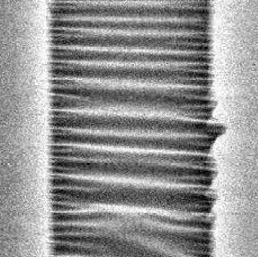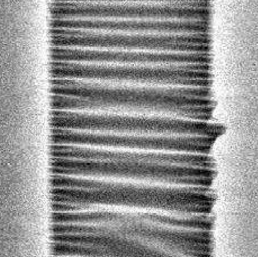A hierarchy of wrinkles
Examples of thin sheets under boundary constraints abound in a wide range of scales—graphene on a substrate stands at one extreme, with a curtain hanging from a window at the other. At first glance, it seems implausible that these extremely disparate examples might exhibit universal behavior. However, Hugues Vandeparre and coauthors from the Université de Mons in Belgium, with collaborators from France and the US, demonstrate precisely that.
Presenting results from scanning electron microscopy and theoretical modeling in Physical Review Letters, the authors show that thin boundary-confined sheets spontaneously develop a universal self-similar hierarchy of wrinkles. They develop a formalism based on “wrinklons,” a quasiparticle analogy of the merging of two wrinkles into a unit of a global pattern. The team compares experiments on a large variety of wrinkling systems, and find excellent agreement. One of their finds is that the average wavelength of folds away from a constrained edge follows a power law with universal exponents, which depend on the density of the material. For light curtains made of fabric or paper, the exponent is . For heavy curtains, made from materials like rubber, but also for constrained graphene bilayers, an additional tensile force acts on the sheet and reduces the exponent to . – Sarma Kancharla





